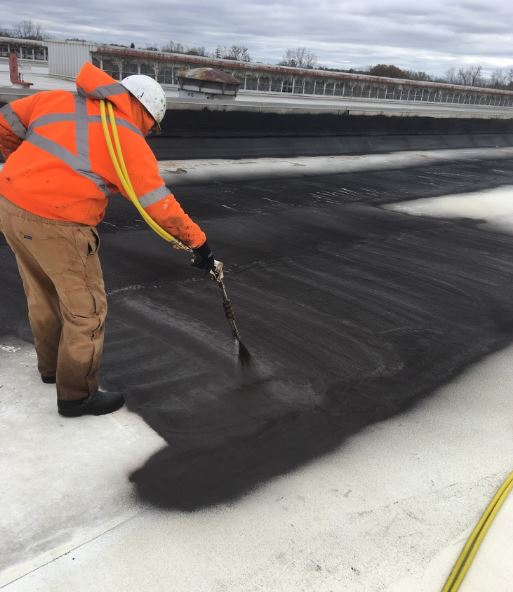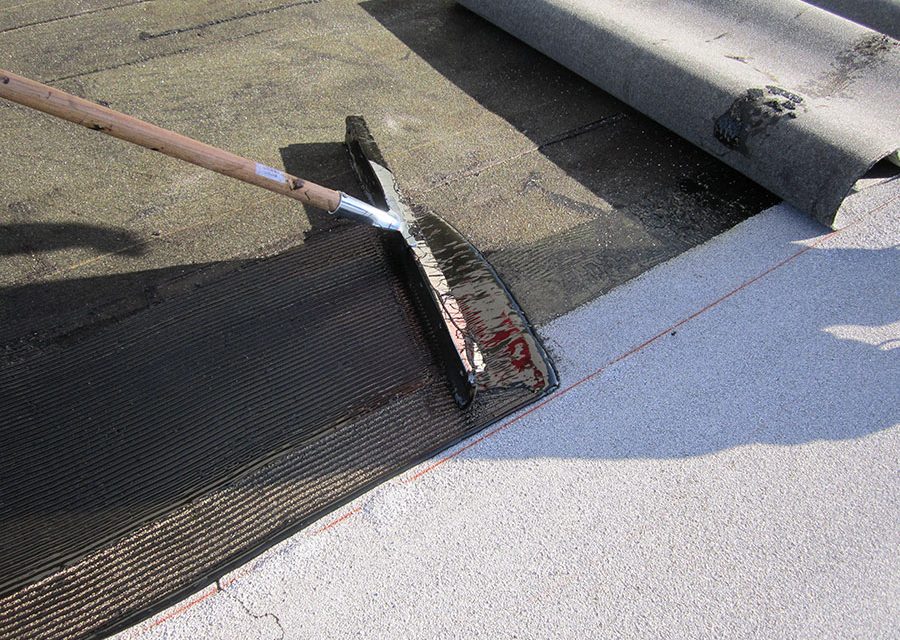Liquid Applied Roofing Solutions
Table of ContentsLiquid Applied Roofing SystemsRoof Problem Areas Addressed By Liquid Roofing MaterialsLiquid Applied Roof SystemSurecoat Systems, Fluid-applied Waterproofing For RoofsAdvancements In Fluid Applied Membranes For Roofing
Consist of membranes that are installed "in location" using highly durable, water based, waterproofing compounds reinforced with tough polyester materials and appeared with energy conserving reflective coverings. As soon as set up the smooth monolithic system is difficult, flexible and resistant to the extremes of nature. We utilize Underwriters Laboratories (U.L.), FM International and independent testing laboratories to continuously evaluate our Systems and Products to be sure they meet the rigid requirements of today's building industry.
Western Colloid's Fluid Applied System's lead to a smooth surface making future assessments and upkeep simple. It also suggests the roof can be resurfaced, therefore extending the life of the roofing system indefinitely. Western Colloid's FARR system's can be applied over BUR, Modified Bitumen, Single Ply, Metal Roofing, Sprayed Polyurethane Foam and Gravel roofing systems.
Save money on energy and equipment expenses (beginning immediately after the roof is set up). Indefinitely extend or remove your need to re-roof or handle significant repair work. Can be applied over your existing roofing system with extremely little trouble. Will not impact employee/tenant productivity due to fumes. Can be shipped wholesale to the job website via our large fleet of tankers.
Liquid Applied Roofing
 What Is Liquid-applied Flashing
What Is Liquid-applied Flashing
No poisonous fumes or fire risk. Every product is backed by experience and efficiency. Numerous of our FARR systems have gotten UL Class A ratings. "Class A" roofing assemblies have the greatest fire resistance. Furthermore, much of our systems have also received FM 4470 Class 1 approval. To achieve this classification, the system goes through difficult testing for fire, hail damage, water leakage, and resistance to foot traffic.
Throughout the middle of the 19th century, modern roofing as we understand it began to take shape when rag felt soaked in tar was layered with hot-mopped tar and covered with gravel. With time, the tar was primarily change by asphalt and the rag felt by fiberglass mat to develop the modern-day built-up roof (BUR).
 What Is Liquid-applied Flashing
What Is Liquid-applied Flashing
According to Jason Smith, senior R&D chemist at the Garland Company, cold-applied roofing system systems describe roofs that are adhered with an adhesive that doesn't need to be heated up prior to its application. They are utilized right out of the drum or pail and applied using a notched squeegee, or also by brush, spray, or roller, depending upon the viscosity of the product.
Liquid-applied Membrane For Roofs
Lee Martucci, item manager at GAF, notes, "The innovation was developed as a way to counter issues over potentially harmful hot asphalt and fumes. When setting up a roof without the huge, unpleasant hot kettles and fumes, the environmental and health issues from the pubic minimize. Plus, specialists can install the membrane systems without investing in bbb accredited roofing contractors near me pricey kettles: all they require is a squeegee." Cold-applied roof eliminates unpleasant hot tar kettles and the associated fumes, which produces a more secure jobsite and less inflammation for the building residents.
George Daisey, a research study researcher at Dow Chemical Business, points out that cold-applied roofing system installations enable safer handling of materials, as there is no hot container to be hoisted onto the roofing. Similarly, the application procedure removes the potential for burns or breathing irritation from hot fumes. Overall, cold-applied roofing system systems lead to a lower level of odor at the task site, which Martucci indicates can result in fewer complaints from building occupants.
With much less equipment needed than in a hot-applied roof task, the total devices expenses are considerably lower. Smith, at Garland, points out that cold-applied roofing systems can be created to have lower volatile natural substance (VOC) emissions, which can be of significance in VOC-restricted areas like California and how much does roof flashing cost much of the northeastern U.S.
Fluid Applied Roofing Q And A
 Product Evaluation
Product Evaluation
According to Daisey, the term "cold-applied roof system" was initially utilized to describe a solvent-based built-up roof that did not need heat to set up. Today, the term has actually widened considerably as a variety of innovations have actually been developed to encompass the variety of roofing systems that do not require heating to be set up.
Cold-Process Built-Up Roofing utilizes heavyweight asphalt-impregnated fiberglass base sheets adhere in numerous plies with solvent-borne asphalt adhesives. The first sheet is generally mechanically attached to the substrate (typically insulation) and subsequent plies (typically 3 or four total) are embedded in an application of adhesive at a rate normally between 1.5 and 2.5 gallons per 100 sq.
Cold-process BUR uses solvent-based asphalt adhesives to adhere multiple layers of base sheet without heat. The membrane is then covered with aggregate. Once the waterproofing layer remains in place, the membrane is covered with an aggregate surface area or roofing covering. Customized Bitumen Roof is an adaptation of "torch-down" roofing. Modified bitumen roofings were typically set up utilizing a lp torch to melt the back of the sheet, developing a molten adhesive in which the roll might be embedded.
Fluid-applied Roofing
For obvious safety reasons, use of cold-applied roof has provided an appealing alternative to making use of hot asphalt or open flame. These roofing systems typically have a mechanically connected base sheet, and one or two plies of modified bitumen membrane installed in bituminous adhesives. Smith explains these adhesives as "rubber-modified fibered solvated asphalt adhesives that dry via solvent evaporation." Martucci includes, "These constructions normally consist of asphalt/solvent blends applied by a squeegee to adhere the membranes to the substrate of other membranes, although there are other innovations that can be utilized.
Monolithic Liquid-Applied mobile home roof repair Roofing blurs the line in between roofing system coating and roofing system membrane system. Generally made from high-tech polymeric resins such as urethanes, these roofing systems are applied as a liquid and often require no reinforcing product, treating to a tough, rubber-like membrane. (See sidebar below). Naturally, as holds true with all roof technologies, there are particular drawbacks to utilizing cold-applied roofing system systems.
https://www.youtube.com/embed/KI_eE4qKf3A
Liquid-Applied Roof is applied as a liquid and typically requires no strengthening product, treating to a difficult, rubber-like membrane. Extra factors to consider consist of the flammability of cold-applied adhesives that are made with solvated asphalt, along with the potential for solvent smell to penetrate through occupied spaces through vents, simply as with the odors from hot-applied roofing system systems.
